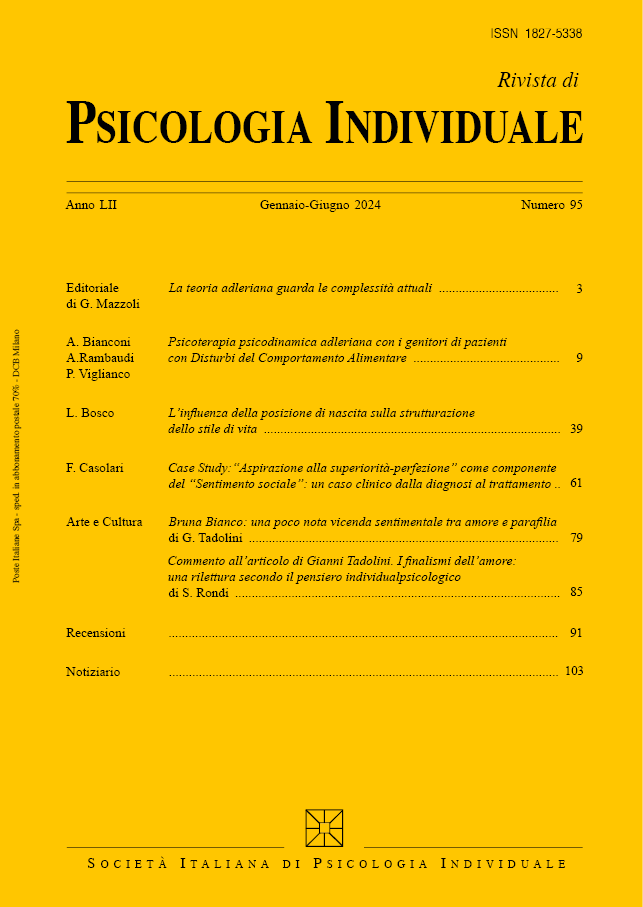A proposito dell'identificazione trans-individuale al servizio dell'agente terapeutico
Parole chiave:
cambiamento dell'analizzato e dell'analista, circolo cognitivo-affettivo-cognitivo di fornari, circuito comunicativo, codici e sovra codici di comprensione, comunicazione analogica, dialettica analitica, identificazione culturale, identificazione operativa, psicologia soggettiva, segno, setting, simbolo, sintomo, transculturalitàAbstract
A. Vengono precisate le intrinseche componenti semiotiche o simboliche dei sintomi.
B. La comunicazione analogica del sintomo segnala un minus ed il tentativo di colmarlo che, nel circuito comunicativo del setting, viene fatto conoscere a un ricevente da un emissario, con l’uso simboli linguistici.
C. Segni e comunicazioni sono fenomeni cultural e subcultural-dipendenti.
D. Perché arbitrari, i simboli hanno bisogno di un codice che li normi, anche se esso è sconosciuto al soggetto stesso. L’analisi del codice, così, è parte integrante dell’analisi dello stile di vita del soggetto.
E. Ciò fa della Psicologia Individuale una psicologia soggettiva (Ansbacher) in cui, dialetticamente, si confrontano tanto chi propone la sofferenza che chi prospetta un lavoro di crescita.
F. Per fare ciò deve esser stabilito un sovra codice di comprensione con un’operazione che è tanto cognitiva che affettiva.
G. L’identificazione operativa dell’analisi è quindi anche un’identificazione culturale. L’analista accetta, così, lo stile di vita del paziente chiedendogli, nel contempo, contraddittoriamente, di cambiare, procedendo, a suo arbitrio, lungo o contro le sue difese, ma venendo nel contempo egli stesso modificato in un circolo cognitivo-affettivo-cognitivo (Fornari)






